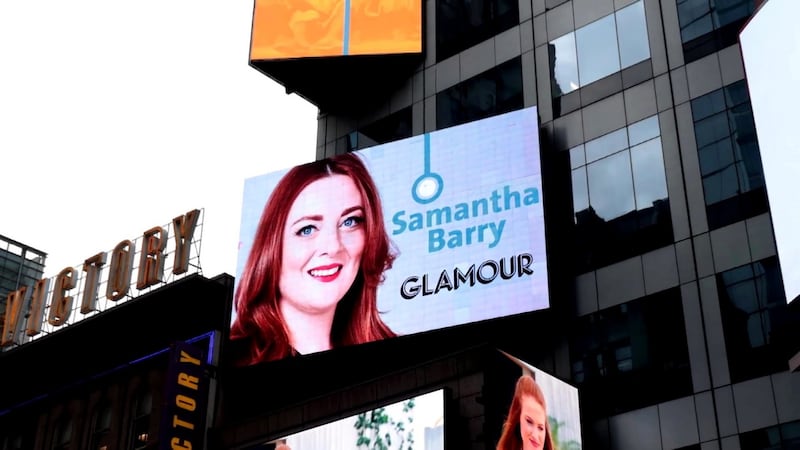Samantha Barry describes an early incident as editor-in-chief of Glamour – where she was a controversial appointment, coming from neither the world of magazines nor that of fashion – when her assistant told her she needed to come up to the 38th floor of the One World Trade Center tower in New York for a run-through.
“And I had that moment: what’s a run-through?”
It turns out it was to decide on the cover look, a process depicted, Barry reminds us, in a Devil Wears Prada scene comparing belt colours. “It was not a situation I had ever been in before; it was what I had seen on TV. But I did what every good Irish girl did, when they brought out the racks of clothes: I said, ‘How much is that?’” There was a “Wait, are we supposed to know that?” moment; the fashion team now know the prices in run-throughs.
The anecdote is reminiscent of an amusing out-of-depth-but-winging-it movie scene but also an indicator of a topic Barry has championed as editor, money literacy and financial independence, among a range of subjects affecting young women’s daily lives.
Her life sounds a bit Hollywood, but Fearless: Samantha Barry (RTÉ One, Monday, 9.35pm) is a tale of a charming and disarming, smart and sussed young Irish journalist made good in a prestigious woman-focused international media brand.

The documentary follows Barry as she prepares for the glitzy Glamour Women of the Year Awards in November 2019, honouring achievers from Greta Thunberg to Margaret Atwood to Charlize Theron. “Tanks… Oh, Jesus, the ‘th’ with the Irish accent,” she says, laughing, as she rehearses her speech.
The run-up is interspersed with the story of how she got there, from her childhood in Ballincollig (“My mom was supercreative; my dad told stories. I like to think I take the best parts of both of them”) to student papers at University College Cork, journalism at Dublin City University and freelancing at RTÉ (“I tried to become staff twice but was rejected”).
A stint travelling in South America led to a radio job in Papua New Guinea in 2012, and “my whole life changed”. The big story there was endemic domestic violence; “not just behind closed doors but openly, on streets, they are beating women”. From there it was to the BBC in London, to CNN in New York, to run its social media, and, in 2018, to Glamour, bringing a global awareness, newsy focus and instinct for young women’s lives to the glossy – reporting to Anna Wintour, the fabled editor-in-chief of Vogue and artistic director of Condé Nast, both magazines’ owner – as it changed its focus from print to digital.
There are cool offices, high-powered meetings, shelves of shoes and lots of shots of Barry striding confidently through New York, glorious red locks and well-cut coats flowing, in the style of scenes from Sex and the City and The Devil Wears Prada.
We like nothing better than someone from little old Ireland achieving international success, and Barry’s brilliant career and natural and engaging personality tick all the boxes, so the viewer thrills in her success. There’s acres of praise for her journalism and how she handles herself, from an array of friends and colleagues (a long string of Condé Nast directors and vice-presidents): she’s driven, energetic, optimistic, lovable, spectacular, a pistol, a risk-taker, a ball of energy, fearless. (We’d blush at the unadulterated positivity if she didn’t seem so likeable and down to earth.)

Wintour is among those fans – “Glamour is very much a reflection of young women that we see today, and Sam is its perfect leader” – as is its chief business officer, Susan Plagemann. “She wants to learn, to be informed. It was that curious sensibility that was so appealing to all of us,” says Wintour, perfectly modulated behind large dark glasses (which must be masking her legendary scariness).
Thank God Barry herself acknowledges she’s sometimes terrified, even as she’s clearly having a ball (“There’s a lot of pinch-me moments every week.”) She has been steering Glamour through seismic changes in the world of glossy publishing, and even as we watch the documentary it’s with the awareness that it is not only the fashion industry that has changed utterly since it was shot, just months ago; the lovingly familiar New York streets that Barry strides are now also a shadow of what they were.



















